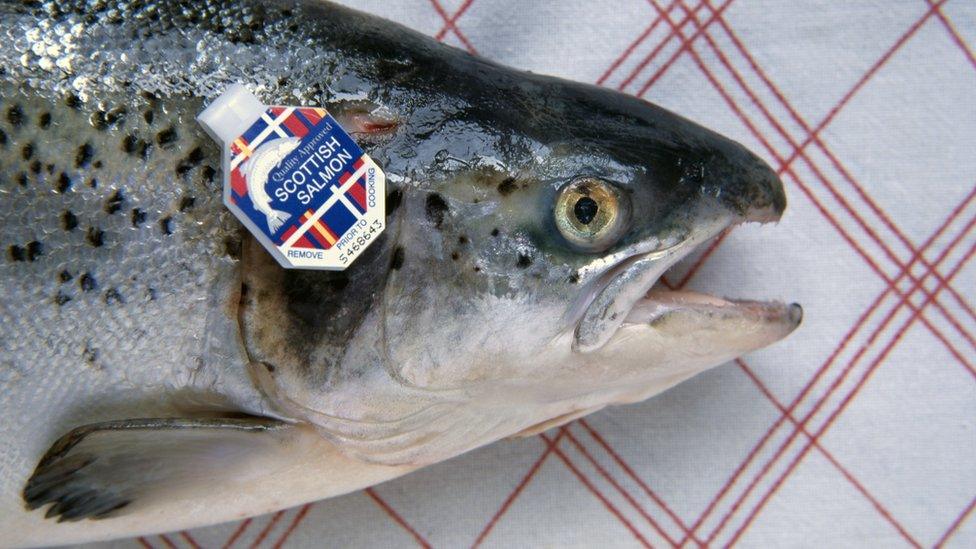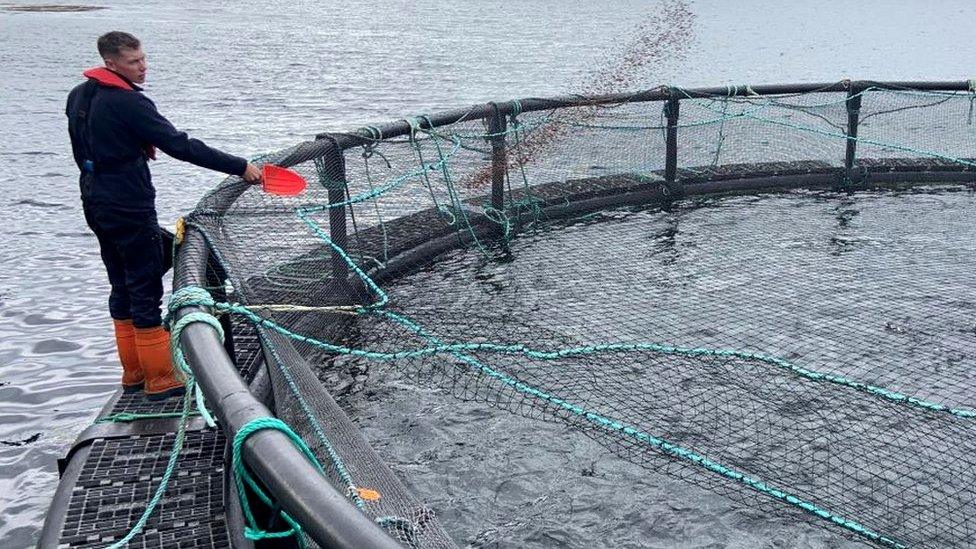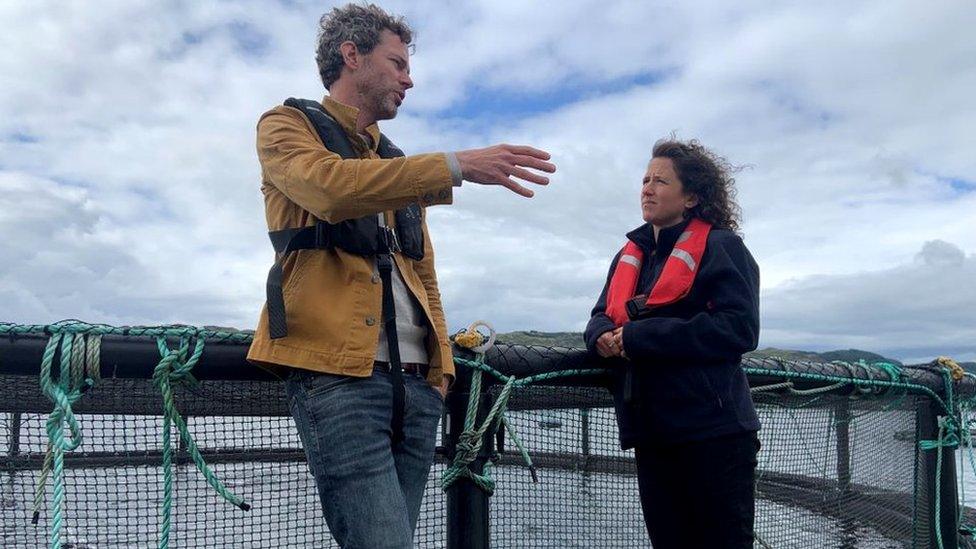Farmed salmon production drops by a fifth in Scotland
- Published

Scottish farmed salmon is the UK's biggest food export.
Production of farmed salmon dropped by nearly a fifth in Scotland last year, according to new figures.
Rising sea temperatures have brought micro-jellyfish which took much of the blame for the reduced tonnage.
The 18% drop of 36,200 tonnes to 169,200 tonnes of Scottish farmed salmon follows several tough years in which the industry faced sea lice infestations and disease.
It is the lowest production level since 2018, when there was also an 18% fall.
Scottish farmed salmon is the UK's biggest food export.
Last year saw the second lowest average weight of harvested fish since 2011, at 5.2kg.
That is an indication of the extent to which the industry has to slaughter fish before they are fully grown, often due to problems with production.
The official statistics, published by the Scottish government, estimates production rising this year to 188,000 tonnes.
The industry is under pressure to tackle high mortality of fish, particularly those kept in sea cages. The cages are overcrowded, according to the industry's critics.
The data shows the survival rate of smolts, or young salmon, was 75.9% for those hatched in 2020. That has been on a gradually declining trend for 20 years.
In the past three years, a high proportion have had to be slaughtered in the first year of their three-year life cycle.

It is the lowest production level since 2018, when there was also an 18% fall.
The Conservative MSP who led a 2018 Holyrood committee inquiry into the industry, Edward Mountain, has raised concerns that the industry has not done enough to reduce mortality.
This August more than 160 incidents were logged by the industry's regulator, including one at Applecross in Wester Ross in which 214,000 young salmon were destroyed because water filter equipment failed in a tank, leading to worsening water quality and the growth of a deadly fungus.
Most of the mortality incidents were due to poor gill health and some were due to poor genetics.
The industry representative body, Salmon Scotland, released figures on Tuesday suggesting that mortality in September was down from 4.7% last year to 3.5% this year.
September can be the worst month for mortality as it sees sea temperatures peak. This year also saw high sea temperatures earlier in the summer.
Challenging year
Salmon can handle the heat but they are vulnerable to jellyfish and algal blooms which develop when temperatures rise.
Measures taken to keep salmon away from risks to their health include 'bubble curtains', which stop algae and jellyfish entering sea cages, and changing feeding patterns to encourage salmon to feed at lower levels further away from threats.
There are also early warning systems which alert the farmers to growing blooms, prompting them to remove fish from cages.
Iain Berrill, technical director at Salmon Scotland, praised the industry for providing good conditions for fish in what had been a "challenging year" with record-breaking seawater temperatures across the globe
"However, while there is always a level of fallen stock in any farming operation, the numbers this year are not where any farmer would want them to be. It is utterly devastating to the farmers caring for those animals when any fish are lost," he said.
"Our ability to address the environmental challenges facing our fish while they spend up to two years in the sea has improved but there is always more we can do to further improve survival."
Related topics
- Published23 August 2023

- Published21 July 2023

- Published1 June 2023